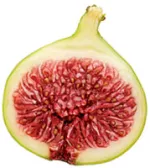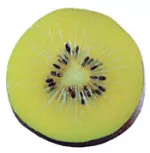Grow Weird Fruit
Horticulture experts recommend some offbeat but easy-to-grow fruits and vegetables
Most home gardeners feel confident nurturing such backyard mainstays as tomatoes, lettuce, and rosemary but get intimidated by quirkier crops. So we asked a handful of horticulture experts to recommend some offbeat but easy-to-grow fruits and vegetables.

MARK FERGUSON is the executive chef at Spago Beaver Creek at the Ritz-Carlton, Bachelor Gulch in Avon, Colorado. His garden on the resort's terrace supplies much of the restaurant's harvest-to-table cuisine.
"I recommend the fava bean for home gardens because it's versatile, hearty, and produces a high yield. With nutty, creamy, and slightly sweet flavors, the bean can be grilled, roasted, or slow-cooked and complements a wide variety of cuisines. Plant it in early spring, after the last frost, in soil rich with organic nutrients. The fava bean thrives in partial shade, sowed about a half-inch deep and four inches apart, against a wall or trellis. In dry climates, it's crucial to lightly water the plant consistently, as opposed to soaking it at odd intervals. If you harvest the bean when it's young, it's sweeter and more delicate. As the pods grow larger, the beans get an earthier flavor and firmer texture."

SONDRA BERNSTEIN owns three renowned restaurants in Sonoma, California, including the Girl and the Fig and Estate, whose on-property garden is the source of many of the menu's ingredients. She is also the author of The Girl and the Fig Cookbook (Simon and Schuster, 2004).
"Fig trees aren't hard to maintain, but you really should be a fig lover if you're going to plant one at home. Fortunately, I have a fig obsession. There are two harvest seasons; some years you'll get lots of fruit, and some years you may be waiting around. Unless you have a wonderfully humid greenhouse, I wouldn't recommend keeping a fig tree indoors. They do best in full sun, with not too much wind. Because figs are so versatile, you can eat them raw off the tree, dry them, make jams and preserves, grill them, or bake them to be served over ice cream."

NICHOLAS STADDON is the director of new plants for Monrovia, a Southern California nursery that earned the EPA Evergreen Award for its pollution-prevention efforts.
"If you've never tried a kumquat, you're in for a treat. The fruits have a sweet rind, but the orange flesh is tart—a delicious contrast in flavors. Eat them right from the garden, toss them in a salad, or make marmalade. A kumquat tree is compact and easy to grow. If you live in a warmer climate, it can reach eight feet. In colder regions, plant it in a container that can be brought indoors and situate it in a sunny spot. The tree will stay dwarf and perfume your home with a heavenly fragrance when in bloom, then get loaded with bright-orange fruit that's stunning against its dark-green foliage. Plant kumquat trees—whether indoors or out—in well-draining soil and water them weekly (more in very hot weather), making sure they get full to partial sun."

JIMMY WILLIAMS and SUSAN HEEGER are the authors of From Seed to Skillet: A Guide to Growing, Tending, Harvesting, and Cooking Up Fresh, Healthy Food to Share With People You Love (Chronicle Books, 2011). Williams is an urban farmer. Heeger is a journalist. Both live in Los Angeles.
"The deep-purple giant eggplant sold at supermarkets is just one form this vegetable takes. Others—hard to find unless you grow them yourself—include long, thin ones; green varieties; and some that look like plums.
Rich and creamy, these smaller types are a snap to grow in full sun and summer heat (the hotter, the better). Start seeds indoors in bright light three weeks before the last predicted frost, or buy seedlings from a farmers' market. Plant the seedlings 10 to 18 inches apart, spreading half a cup of organic fertilizer around each. Let the soil dry a bit between waterings. Within weeks, you'll be enjoying caponata, moussaka, and baba ghanouj."

STELLA OTTO, a Michigan horticulturist, wrote The Backyard Orchardist: A Complete Guide to Growing Fruit Trees in the Home Garden (Ottographics, 1995).
"Hardy kiwifruit are novel but easy. The smooth-skinned fruit tastes both sweet and tangy. I've planted the decorative vines—two females with a male in between—on the north side of my pasture fence. The posts, 10 feet apart, provide the perfect support and spacing for their vigorous growth, while also shading the root systems. The fence line makes a convenient trellis. My soil is fertile but sandy and well-drained, a must for these vines. I side-dress them with composted horse manure. A deep watering, once weekly, is best to help them develop a root system free of disease. As for pruning and vine positioning, I treat them pretty much like grapes. They'll put out their fragrant flowers and fruit on new growth that originates on last season's spurs."
 The Magazine of The Sierra Club
The Magazine of The Sierra Club



